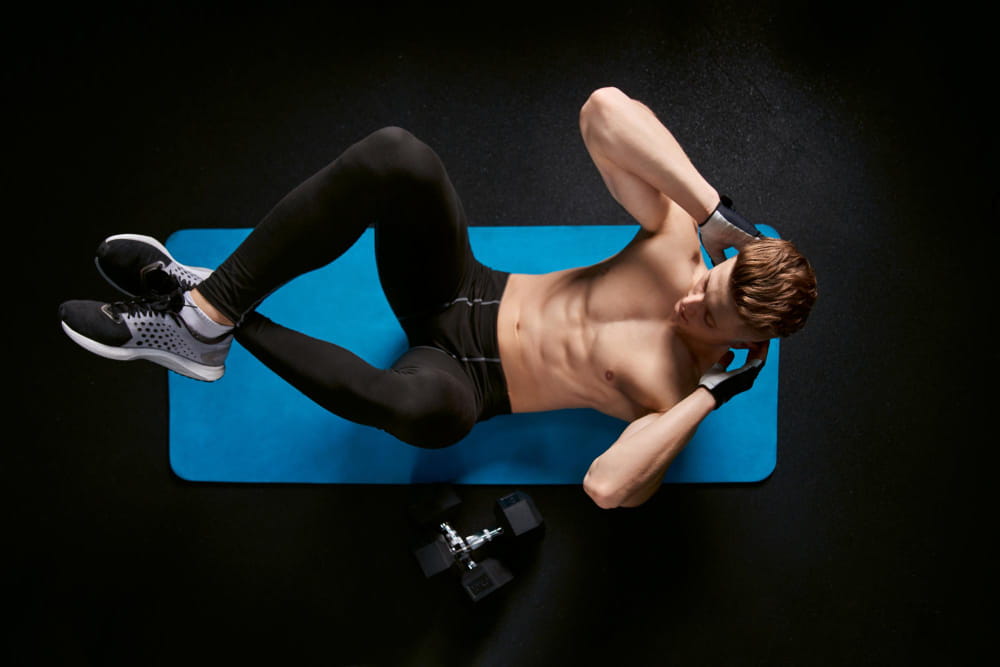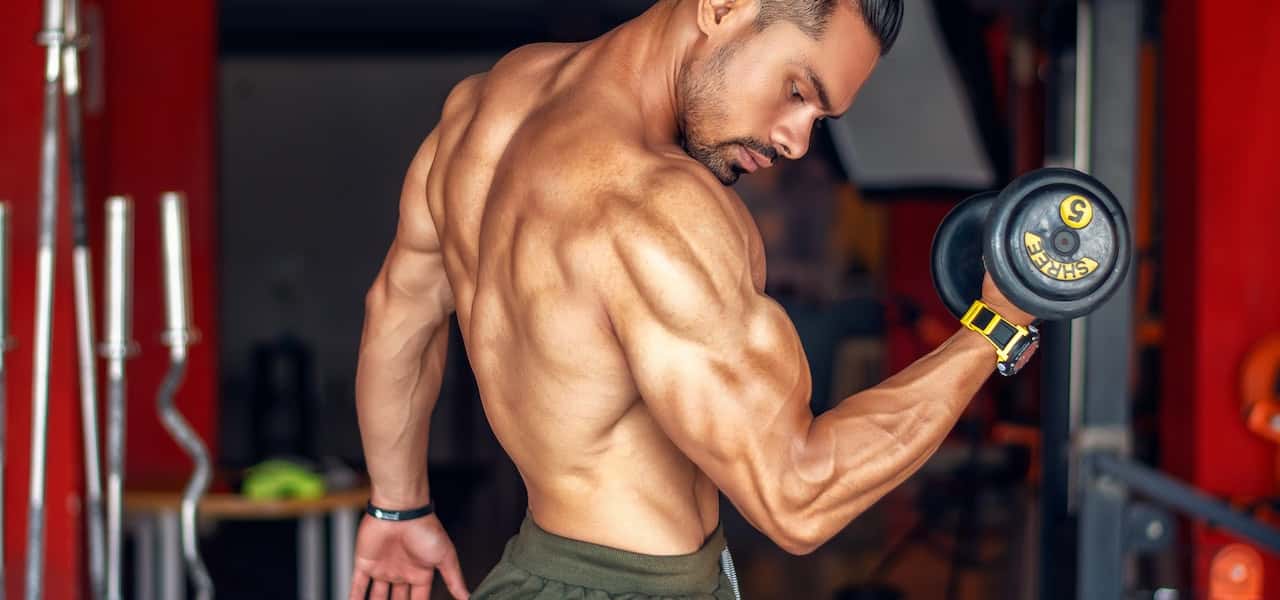Fitness
Does Creatine Make You Taller at 16? Unveiling the Truth

Here is your complete guide to Does Creatine Make You Taller at 16
Introduction to Does Creatine Make You Taller at 16
Creatine, a popular supplement in the fitness world, has gained attention among teenagers seeking to enhance their athletic performance and physical development. As a 16-year-old, you may be wondering, does creatine make you taller at 16? In this article, we will delve into the science behind creatine supplementation and its potential impact on height during adolescence. So, let’s explore whether creatine can really influence your height growth at this crucial stage of life. So does creatine make you taller at 16?
Understanding Creatine
- Creatine is a naturally occurring compound found in small amounts in certain foods like meat and fish. It plays a vital role in providing energy to the body’s cells, especially during short bursts of intense physical activity.
- Creatine supplementation has become popular among athletes and bodybuilders due to its potential to enhance exercise performance, muscle strength, and overall physical capacity.
- It’s important to note that creatine is not a miracle growth supplement, but rather a supplement for improving athletic performance.
The Science of Growth during Adolescence
- During adolescence, your body undergoes significant growth and development, driven by various factors, including genetics, nutrition, hormones, and physical activity.
- Puberty, the period of sexual maturation, triggers a surge in hormones like growth hormone and testosterone, which contribute to height growth, bone density, and muscle development.
- Nutrition plays a crucial role in supporting healthy growth during the teenage years. A balanced diet that includes essential nutrients like proteins, vitamins, minerals, and adequate calories is vital for optimal development.
How Does Creatine Affect Your Growth Height?
Overview:
Creatine is a popular supplement known for its benefits in enhancing athletic performance and muscle strength. However, when it comes to growth height, there is no direct evidence to suggest that creatine supplementation can increase height in individuals, including 16-year-olds. Height growth during adolescence is primarily influenced by genetics, hormones, nutrition, and overall health factors.
Factors Affecting Growth Height:
- Genetics: Your height potential is largely determined by your genetic makeup inherited from your parents.
- Hormones: Hormones, such as growth hormone and testosterone, play a crucial role in regulating height growth during puberty.
- Nutrition: A balanced diet with essential nutrients is vital for healthy growth during adolescence.
Table: Factors Affecting Growth Height
| Factors | Influence on Height Growth |
|---|---|
| Genetics | Major determinant of height potential |
| Hormones | Regulate growth during puberty |
| Nutrition | Supports healthy growth and development |
Does Increasing Creatine Make You Taller at 16?
Overview:
Increasing creatine intake through supplementation does not have a direct impact on height growth in 16-year-olds. While creatine may have various benefits for athletic performance and muscle development, it does not influence the natural growth process during adolescence.
Table: Common Misconceptions about Creatine and Height Growth
| Misconception | Fact |
|---|---|
| Creatine increases height in teenagers. | There is no scientific evidence to support this claim. |
| Creatine is a height growth supplement. | Creatine is primarily used for improving performance. |
| Creatine has a direct impact on growth. | Growth height is determined by genetics and hormones. |
Does Creatine Increase Growth Hormone?
Overview:
Creatine does not directly increase growth hormone levels in the body. Growth hormone is a peptide hormone produced by the pituitary gland and plays a significant role in regulating growth, metabolism, and other physiological processes. While creatine has shown potential benefits for muscle strength and athletic performance, it does not have a direct influence on the production or secretion of growth hormone.
Table: Comparing Creatine and Growth Hormone
| Aspect | Creatine | Growth Hormone |
|---|---|---|
| Origin | Naturally occurring compound in the body. | Peptide hormone produced by the pituitary gland. |
| Primary Function | Provides energy for short bursts of intense activity. | Regulates growth, metabolism, and other physiological processes. |
| Effect on Growth | Does not directly affect height growth. | Influences height growth during puberty. |
Best Creatine for Height Growth at 16
Overview:
While creatine does not promote height growth, it can still be beneficial for athletic performance and muscle development in 16-year-olds engaged in sports or intense physical activities. The best creatine type for teenagers is creatine monohydrate due to its extensive research, safety, and efficacy.
Types of Creatine and Recommended Form for Teenagers
| Creatine Type | Description | Recommended for Teenagers |
|---|---|---|
| Creatine Monohydrate | Most researched and widely used form of creatine. | Yes, safe and effective for teenagers. |
| Creatine Ethyl Ester | Modified form of creatine with improved absorption. | Not recommended due to lack of research on safety for teenagers. |
| Creatine HCL | Creatine bonded with hydrochloric acid for better solubility. | Not enough research on safety for teenagers. |
| Micronized Creatine | Standard creatine with smaller particle size for better mixability. | Yes, safe and effective for teenagers. |
Note: Always consult with a healthcare professional before starting any supplementation, including creatine, especially for teenagers.
Exploring Creatine’s Effect on Height
Before delving into scientific studies, it’s important to clarify that there is no direct evidence to suggest that creatine supplementation can increase height in 16-year-olds. Height is primarily determined by genetics and hormonal factors during adolescence.
Addressing Common Myths and Misconceptions
- Myth: Creatine makes you taller. Truth: Creatine does not directly influence height growth.
- Myth: Creatine stunts growth. Truth: There is no scientific evidence to support this claim. Creatine, when used responsibly, is safe for teenagers.
Read Also: Are Rice Krispies Good for Bulking?
FAQs: Your Questions Answered
Can creatine make me taller during puberty?
Creatine does not affect height directly. Focus on nutrition, exercise, and overall health for proper growth.
Read Also: The Veep Diet.
Does creatine affect 16-year-olds?
Creatine can have an impact on 16-year-olds, especially those involved in intense physical activities or sports. While there is no direct evidence to suggest that creatine supplementation can increase height, it may enhance athletic performance, muscle strength, and overall physical capacity. However, it is essential for teenagers to use creatine responsibly and under the guidance of a healthcare professional.
Read Also: Smoothie Spot Nutrition Facts.
Can creatine help increase height?
No, creatine does not help increase height. Height growth during adolescence is primarily determined by genetics and hormonal factors, especially the surge of growth hormone and testosterone during puberty. Creatine supplementation does not influence the natural growth process, and there is no scientific evidence to support the claim that it can increase height in teenagers.
Read Also: Bio Diet Meal Plan.
What is the best creatine for 16-year-olds?
The best creatine for 16-year-olds is a monohydrate form, which is the most researched and widely used type of creatine. Creatine monohydrate is safe and effective for teenagers when used responsibly and in accordance with recommended dosage guidelines. It is essential to choose high-quality creatine products from reputable brands to ensure purity and safety.
Read Also: Can You Put Creatine in Oatmeal?
Is creatine a growth hormone?
No, creatine is not a growth hormone. Creatine is a naturally occurring compound found in small amounts in certain foods and is involved in providing energy to the body’s cells during intense physical activities. Growth hormones, on the other hand, are produced by the body’s endocrine system, specifically the pituitary gland, and play a crucial role in regulating growth, metabolism, and various physiological processes during adolescence. Creatine and growth hormones serve different functions in the body.
Read Also: Native Foods Nutrition Facts.
Is creatine safe for 16-year-olds?
When used responsibly and with medical guidance, creatine is generally safe for teenagers.
Read Also: Couples Diet Challenge.
Does creatine have any effect on muscle growth?
Yes, creatine may improve muscle strength and overall athletic performance.
Read Also: Creatine for Keto.
Precautions and Recommendations
- Consult a healthcare professional before starting any supplementation, including creatine.
- Follow recommended dosage guidelines and avoid excessive use.
- Stay hydrated while using creatine, as it can increase water retention.
- Combine creatine with a balanced diet and exercise routine for the best results.
Read Also: Why Does Creatine Make You Pee?
Conclusion
In conclusion, creatine does not make you taller at 16. Height growth during adolescence is a complex process influenced by genetics, hormones, nutrition, and physical activity. While creatine has its benefits for athletic performance, it is not a magical solution for height enhancement. For teenagers seeking overall growth and development, a focus on a balanced diet, exercise, and healthy lifestyle choices is key.
Read Also: Creatine Big Muscle.
Remember, your teenage years are a crucial time for building a strong foundation for a healthy and active life. Embrace a holistic approach to well-being, and you’ll set yourself up for a bright and thriving future.
Read Also: Does Creatine Make Your Penis Small?
Fitness
Quad Exercises Dumbbells for Strength Gains
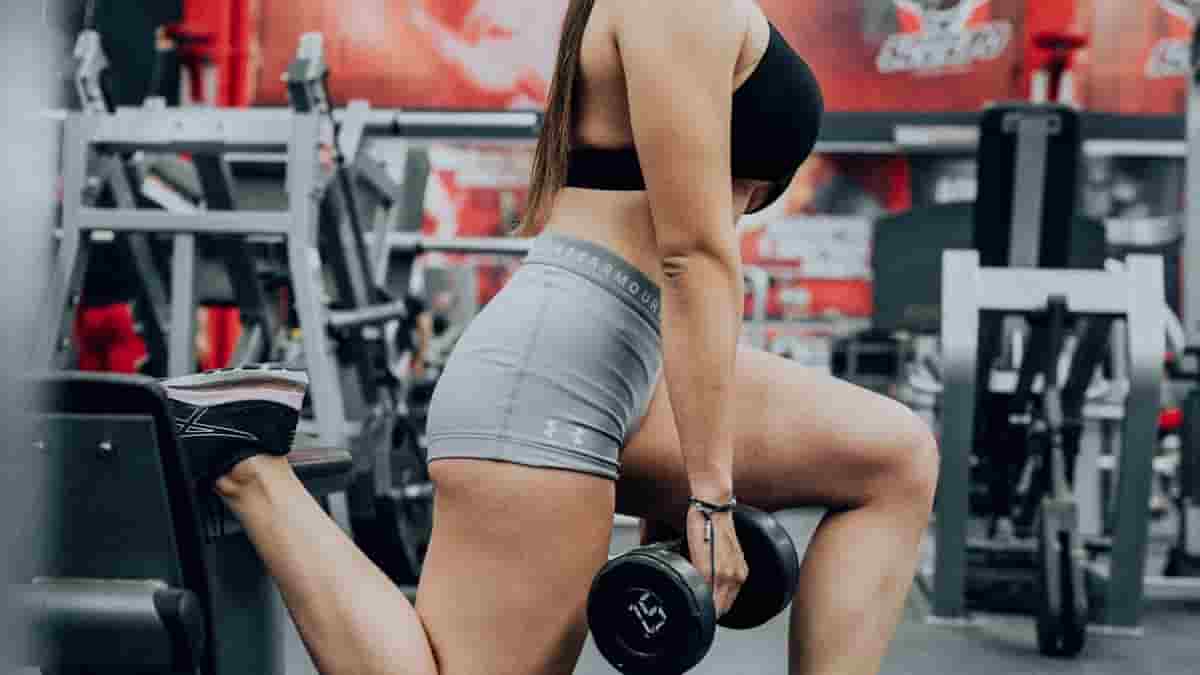
Here is your complete guide to quad exercises dumbbells
Introduction to Quad Exercises Dumbbells
Developing a strong, well-defined lower body is a goal for many fitness enthusiasts, and for good reason. The quadriceps, or “quads,” are a crucial muscle group that play a vital role in our daily movements and athletic performance. By incorporating quad exercises dumbbells into your routine, you can unlock a world of benefits, from improved aesthetics to enhanced overall strength and power.
In this comprehensive guide, we’ll delve into the anatomy of the quadriceps, explore the advantages of training this muscle group, and uncover the top 15 dumbbell quad exercises to help you achieve your fitness goals. Whether you’re a beginner looking to build a solid foundation or an experienced athlete seeking to take your lower body strength to new heights, this article has something for everyone.
The Anatomy of the Quadriceps
The quadriceps, or “quads,” are a group of four muscles located in the front of the thigh. These muscles include the rectus femoris, vastus lateralis, vastus medialis, and vastus intermedius. Each of these muscles plays a unique role in knee extension and hip flexion, working together to generate the powerful force needed for activities like running, jumping, and climbing stairs.
Understanding the anatomy of the quadriceps is crucial for designing effective dumbbell quad exercises that target specific muscle groups and ensure balanced development. By focusing on exercises that engage the different quad muscles, you can create a well-rounded, aesthetically pleasing lower body.
Benefits of Training the Quadriceps
Incorporating dumbbell quad exercises into your fitness routine can provide a wide range of benefits, including:
Improved Aesthetics
Developing your quads can lead to more defined, muscular legs and a balanced, proportional physique. This can enhance your overall appearance and boost your confidence.
Increased Lower Body Strength
Strong quads are essential for generating power and force in the lower body, which can improve your performance in a variety of exercises and activities, such as squats, lunges, and plyometrics.
Improved Quality of Life
Stronger quads can enhance your mobility, stability, and overall physical function, making everyday tasks easier and reducing the risk of injury.
Increased Upper Body Strength
Quad strength can provide a stable foundation for upper body exercises, allowing you to lift heavier weights and improve your overall strength.
Enhanced Athletic Performance
ell-developed quads are crucial for sports and activities that require speed, agility, and explosive power, such as sprinting, jumping, and changing direction.By understanding the benefits of quad exercises dumbbells, you can create a targeted training plan that aligns with your specific fitness goals and helps you achieve the results you desire.
Top 15 Dumbbell Quad Exercises
Incorporating a variety of dumbbell quad exercises into your routine is essential for building a strong, balanced lower body. In this section, we’ll explore 15 highly effective exercises that target the different muscles of the quadriceps, providing detailed instructions, benefits, and common mistakes to avoid.
Targeting the Vastus Lateralis (Outer Thighs)
- Close-Stance Dumbbell Front Squat
- Dumbbell Hack Squats
Targeting the Rectus Femoris (Central Quad Muscle)
- Dumbbell Squats
- Dumbbell Lunges
The Vastus Medialis (Inner Thighs)
- Dumbbell Split Squat
Full Quad Activation
- Goblet Squat
- Dumbbell Front Squats
- Dumbbell Step-Ups
- Dumbbell Sumo Deadlift
- Dumbbell Reverse Lunge
- Dumbbell Jump Squat
- Dumbbell Lateral Lunge
- Dumbbell Curtsy Lunge
- Dumbbell Overhead Squat
- Dumbbell Sissy Squat
For each exercise, we’ll provide a detailed description, including:
- How to perform the exercise
- Benefits of the exercise
- Common mistakes to avoid
To help you understand the focus and muscle activation of each exercise, we’ve created the following tables:
Muscle Activation for Dumbbell Quad Exercises
| Exercise | Rectus Femoris | Vastus Lateralis | Vastus Medialis |
|---|---|---|---|
| Close-Stance Dumbbell Front Squat | Moderate | High | Moderate |
| Dumbbell Hack Squats | Moderate | High | Moderate |
| Dumbbell Squats | High | Moderate | Moderate |
| Dumbbell Lunges | High | Moderate | Moderate |
| Dumbbell Split Squat | Moderate | Moderate | High |
| Goblet Squat | High | High | High |
| Dumbbell Front Squats | High | High | High |
| Dumbbell Step-Ups | High | Moderate | Moderate |
| Dumbbell Sumo Deadlift | Moderate | High | Moderate |
| Dumbbell Reverse Lunge | High | Moderate | Moderate |
| Dumbbell Jump Squat | High | High | High |
| Dumbbell Lateral Lunge | Moderate | High | High |
| Dumbbell Curtsy Lunge | Moderate | High | High |
| Dumbbell Overhead Squat | High | High | High |
| Dumbbell Sissy Squat | High | Moderate | High |
Muscle Focus for Dumbbell Quad Exercises
| Exercise | Muscle Focus |
|---|---|
| Close-Stance Dumbbell Front Squat | Vastus Lateralis |
| Dumbbell Hack Squats | Vastus Lateralis |
| Dumbbell Squats | Rectus Femoris |
| Dumbbell Lunges | Rectus Femoris |
| Dumbbell Split Squat | Vastus Medialis |
| Goblet Squat | Full Quad Activation |
| Dumbbell Front Squats | Full Quad Activation |
| Dumbbell Step-Ups | Full Quad Activation |
| Dumbbell Sumo Deadlift | Vastus Lateralis |
| Dumbbell Reverse Lunge | Full Quad Activation |
| Dumbbell Jump Squat | Full Quad Activation |
| Dumbbell Lateral Lunge | Vastus Medialis |
| Dumbbell Curtsy Lunge | Vastus Medialis |
| Dumbbell Overhead Squat | Full Quad Activation |
| Dumbbell Sissy Squat | Vastus Medialis |
Muscle Activation Levels for Dumbbell Quad Exercises
| Exercise | Rectus Femoris | Vastus Lateralis | Vastus Medialis |
|---|---|---|---|
| Close-Stance Dumbbell Front Squat | Moderate | High | Moderate |
| Dumbbell Hack Squats | Moderate | High | Moderate |
| Dumbbell Squats | High | Moderate | Moderate |
| Dumbbell Lunges | High | Moderate | Moderate |
| Dumbbell Split Squat | Moderate | Moderate | High |
Muscle Activation Levels for Full Quad Activation Exercises
| Exercise | Rectus Femoris | Vastus Lateralis | Vastus Medialis |
|---|---|---|---|
| Goblet Squat | High | High | High |
| Dumbbell Front Squats | High | High | High |
| Dumbbell Step-Ups | High | Moderate | Moderate |
| Dumbbell Reverse Lunge | High | Moderate | Moderate |
| Dumbbell Jump Squat | High | High | High |
| Dumbbell Overhead Squat | High | High | High |
Muscle Activation Levels for Targeted Quad Exercises
| Exercise | Rectus Femoris | Vastus Lateralis | Vastus Medialis |
|---|---|---|---|
| Dumbbell Sumo Deadlift | Moderate | High | Moderate |
| Dumbbell Lateral Lunge | Moderate | High | High |
| Dumbbell Curtsy Lunge | Moderate | High | High |
| Dumbbell Sissy Squat | High | Moderate | High |
By understanding the muscle activation and focus of each dumbbell quad exercise, you can create a well-rounded training program that targets all aspects of the quadriceps, leading to balanced, proportional muscle development.
Dumbbell Quad Workout Routines
To help you get started, we’ve provided three sample dumbbell quad workout routines catered to different fitness levels:
Beginner Quad Workout
- Dumbbell Squats: 3 sets of 12-15 reps
- Dumbbell Lunges: 3 sets of 10-12 reps per leg
- Dumbbell Split Squat: 2 sets of 8-10 reps per leg
Intermediate Quad Workout
- Goblet Squat: 4 sets of 10-12 reps
- Dumbbell Front Squats: 3 sets of 8-10 reps
- Dumbbell Step-Ups: 3 sets of 8-10 reps per leg
Advanced Quad Workout
- Dumbbell Sumo Deadlift: 4 sets of 6-8 reps
- Dumbbell Reverse Lunge: 3 sets of 8-10 reps per leg
- Dumbbell Jump Squat: 3 sets of 6-8 reps
Remember, the key to progress is to gradually increase the weight, reps, or sets over time, allowing your muscles to adapt and grow stronger. Consistency and proper form are also essential for maximizing the benefits of dumbbell quad exercises.
Best Tips for Quad Exercises Dumbbells
Maintain Upright Posture
When performing dumbbell quad exercises, it’s crucial to maintain an upright, neutral spine position. Avoid rounding your back or leaning too far forward, as this can put unnecessary stress on your lower back.
Engage Your Core
Keeping your core engaged throughout the movement helps stabilize your body and transfer force more efficiently from your lower body to your upper body.
Control the Movement
Focus on controlling the eccentric (lowering) and concentric (lifting) phases of each exercise. Avoid bouncing or using momentum, as this can compromise form and limit muscle activation.
Targeting Specific Quad Muscles
Focus on Knee Flexion
Exercises that involve a greater range of knee flexion, such as the goblet squat and dumbbell front squat, tend to emphasize the rectus femoris, the central quad muscle.
Vary Foot Positioning
Adjusting your foot positioning can help target different areas of the quadriceps. For example, a wider stance with toes pointed out targets the vastus lateralis (outer quad), while a narrower stance with toes pointed forward targets the vastus medialis (inner quad).
Incorporate Isolation Exercises
Movements like the dumbbell leg extension and dumbbell sissy squat can help isolate and strengthen the quadriceps, particularly the vastus medialis.
Progressive Overload and Variation
Gradually Increase Resistance
Slowly increase the weight, reps, or sets of your dumbbell quad exercises over time to continually challenge your muscles and drive progress.
Mix Up Your Exercises
Rotate different dumbbell quad exercises in and out of your routine to keep your muscles guessing and prevent plateaus.
Adjust Exercise Tempo
Experimenting with different tempos, such as slower eccentric phases or explosive concentric movements, can also help stimulate new muscle growth.
Recovery and Injury Prevention
Allow for Adequate Rest
Make sure to give your quadriceps sufficient rest and recovery time between workouts to avoid overtraining and minimize the risk of injury.
Incorporate Mobility Work
Spend time stretching and foam rolling your quads, as well as performing mobility drills to maintain flexibility and joint health.
Listen to Your Body
Pay attention to any pain or discomfort, and adjust your training accordingly. It’s better to scale back or modify an exercise than to push through an injury.
By following these best practices for dumbbell quad exercises, you can effectively target and strengthen your quadriceps, leading to improved lower body strength, power, and aesthetics.
Frequently Asked Questions About Quad Exercises Dumbbells
Can you build quads with dumbbells?
Yes, you can absolutely build quad strength and size using dumbbells. Dumbbell exercises effectively target and challenge the quadriceps muscles, allowing for progressive overload and muscle growth.
Read Also: Leg Press and Hack Squat Machine.
What are the best exercises for the inner and outer quads?
For targeting the vastus medialis (inner quads), exercises like the dumbbell split squat and dumbbell lateral lunge are highly effective. To focus on the vastus lateralis (outer quads), try the close-stance dumbbell front squat and dumbbell hack squats.
Read Also: Overhead Press Shoulder Pain.
How often should I train my quads with dumbbells?
For most people, training the quads with dumbbells 2-3 times per week is a good starting point. This allows for adequate recovery and progressive overload. However, your specific training frequency may vary depending on your fitness level, goals, and overall training program.
Read Also: Crossfit Workouts for Hotel Gyms.
Can I use dumbbells for all quad exercises, or do I need a barbell?
While dumbbells are highly versatile and can be used for a wide range of quad exercises, there are some exercises that may be better suited for a barbell, such as the traditional back squat. The choice between dumbbells and a barbell will depend on your individual needs, equipment availability, and personal preference.
Read Also: High Protein Pumpkin Cheesecake.
Conclusion
In conclusion, incorporating dumbbell quad exercises into your fitness routine is an excellent way to build strength, definition, and power in your lower body. By understanding the anatomy of the quadriceps, the benefits of training this muscle group, and the top 15 dumbbell quad exercises, you can create a comprehensive training plan that helps you achieve your fitness goals.
Read Also: Keto Vegetarian Breakfast.
Remember, consistency, proper form, and progressive overload are key to maximizing the benefits of dumbbell quad exercises. Start with the beginner or intermediate routines and gradually increase the intensity as your strength and endurance improve.
Read Also: The Surprising Health Benefit of Celery Tea.
Unleash the power of your quads and take your lower body strength to new heights with this comprehensive guide to dumbbell quad exercises. Embrace the challenge, stay committed, and watch as your legs transform into a testament to your hard work and dedication.
Read Also: Salmon Breakfast Recipes.
Fitness
Glute Machines for Home Transformation
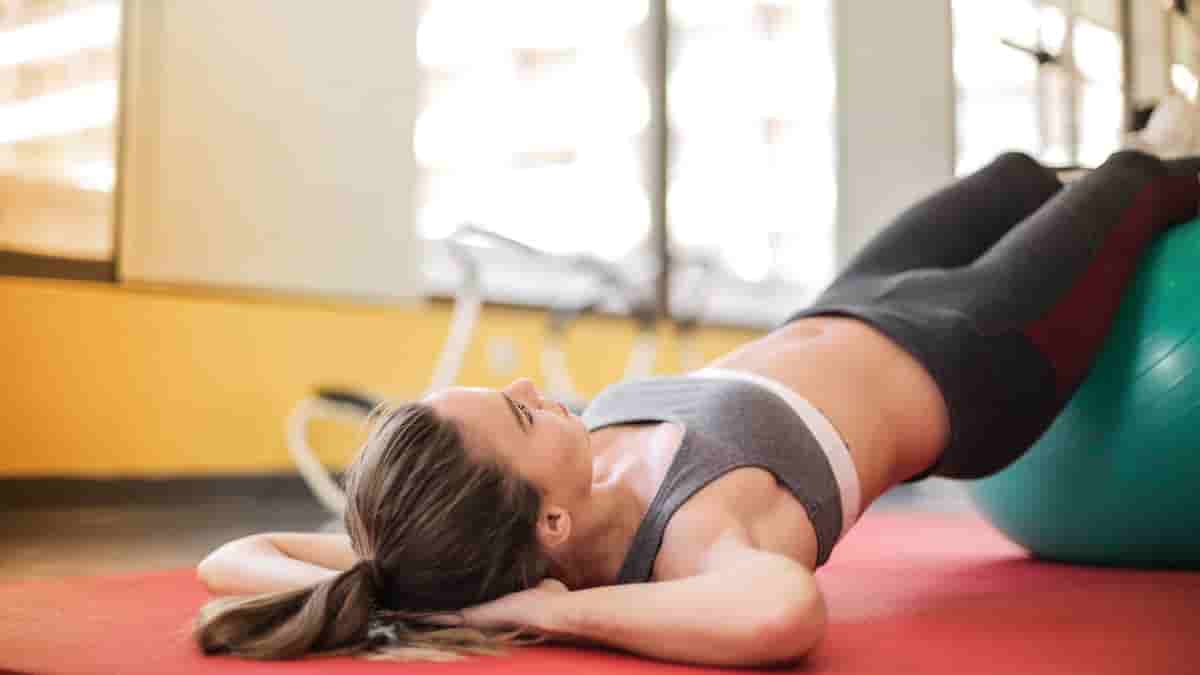
Here is your complete guide to glute machines for home
Introduction to Glute Machines for Home
What are the best glute machines for home? Are you tired of lackluster glute workouts and dreaming of sculpted, powerful glutes? Look no further than the world of glute machines for home! These innovative tools offer a convenient and effective way to target your glutes and achieve the results you desire. In this comprehensive guide, we’ll explore the various types of glute machines for home, their benefits, and how to choose the best one for your fitness goals. Get ready to say goodbye to flat, inactive glutes and hello to a stronger, more toned backside!
Types of Glute Machines for Home Use
When it comes to glute machines for home, there are several options to choose from. Let’s dive into the most popular types and their unique features:
- Resistance Bands
- Portable and affordable
- Versatile for various exercises
- May require more effort to target the glutes effectively
- Glute Bridges
- Simple and require no additional equipment
- Targets the glutes effectively
- May not provide enough resistance for advanced users
- Glute Kickbacks
- Isolates and targets the glutes
- May require additional equipment like resistance bands
- Effective for building glute strength and activation
- Glute Thrusters
- Provides a challenging and intense glute workout
- May require a higher level of coordination and balance
- Helps build power and strength in the glutes
To better understand the pros and cons of each type, refer to the table below:
| Type | Pros | Cons |
|---|---|---|
| Resistance Bands | Portable, affordable, versatile | May require more effort to target glutes |
| Glute Bridges | Simple, no equipment needed | May not provide enough resistance for advanced users |
| Glute Kickbacks | Targets glutes effectively | May require additional equipment like resistance bands |
| Glute Thrusters | Provides a challenging workout | May require a higher level of coordination |
Benefits of Using Glute Machines at Home
Incorporating glute machines into your home workouts offers numerous benefits:
- Improved glute strength and activation
- Enhanced overall lower body strength and power
- Increased muscle tone and definition in the glutes
- Reduced risk of injury by strengthening the glutes
- Convenience and cost-effectiveness of working out at home
By consistently using glute machines at home, you’ll notice improvements in your athletic performance, posture, and overall quality of life.
How to Choose the Best Glute Machine for Your Home
When selecting a glute machine for your home, consider the following factors:
- Available space
- Measure the area where you plan to place the machine
- Choose a compact and space-saving option if needed
- Budget
- Determine how much you’re willing to invest in a glute machine
- Look for quality options within your budget range
- Fitness level
- Choose a machine that challenges you without being too difficult
- Consider machines with adjustable resistance for progression
- Versatility
- Look for machines that offer multiple exercise options
- Versatile machines can target various muscle groups
To help you make an informed decision, here’s a table with recommended glute machines based on different budgets:
| Budget | Recommended Glute Machines |
|---|---|
| Under $50 | Resistance bands, glute bridges |
| $50-$100 | Resistance bands, glute kickbacks |
| $100-$200 | Resistance bands, glute thrusters |
| Over $200 | Dedicated glute machines (e.g., hip thrust machines) |
Remember, the best glute machine is the one that fits your needs, budget, and space constraints while providing an effective and challenging workout.
Glute Machine Exercises and Workouts
To get the most out of your glute machine, it’s essential to learn proper form and technique. Here are some common exercises you can perform:
- Glute Bridges
- Lie on your back with your knees bent and feet flat on the floor
- Engage your glutes and lift your hips off the ground
- Hold at the top for a moment, then slowly lower back down
- Glute Kickbacks
- Position yourself on your hands and knees
- Engage your glutes and kick one leg back, keeping your knee bent
- Slowly lower your leg back to the starting position
- Hip Thrusts
- Sit on the floor with your back against a bench or sturdy surface
- Place a weight on your lap and engage your glutes to lift your hips
- Hold at the top for a moment, then slowly lower back down
- Donkey Kicks
- Get on your hands and knees with your knees hip-width apart
- Engage your glutes and kick one leg back, keeping your knee bent
- Slowly lower your leg back to the starting position
To incorporate glute machine exercises into your workout routine, try this sample workout:
- Warm-up: 5-10 minutes of light cardio
- Glute Bridges: 3 sets of 12-15 reps
- Glute Kickbacks: 3 sets of 12-15 reps per leg
- Hip Thrusts: 3 sets of 10-12 reps
- Donkey Kicks: 3 sets of 12-15 reps per leg
- Cool-down: 5-10 minutes of stretching
Remember to start with lighter weights and focus on proper form. As you progress, gradually increase the resistance and challenge yourself to push your limits.
Best Workouts for Glute Machines at Home
When it comes to getting the most out of your glute machines for home, it’s essential to incorporate them into a well-rounded workout routine. Here are some tips for creating effective glute machine workouts:
Compound Exercises
- Include compound exercises like squats and deadlifts in your routine
- These exercises engage multiple muscle groups, including the glutes
- Perform them before glute machine exercises to ensure you have enough energy
Progressive Overload
- Gradually increase the resistance or weight used on your glute machines
- This challenges your muscles to adapt and grow stronger over time
- Aim for 2-3 sets of 8-12 reps, increasing the weight when you can comfortably complete 12 reps
Variety
- Mix up the exercises and machines you use for your glutes
- Incorporate different angles and movements to target the glutes from various directions
- This helps ensure balanced development and prevents plateaus
Rest and Recovery
- Allow for adequate rest and recovery between glute machine workouts
- Aim for at least 48 hours of rest between sessions targeting the same muscle groups
- Proper rest is crucial for muscle growth and injury prevention
Sample Glute Machine Workout
- Warm-up: 5-10 minutes of light cardio
- Barbell Squats: 3 sets of 8-10 reps
- Glute Bridges: 3 sets of 12-15 reps
- Glute Kickbacks: 3 sets of 12-15 reps per leg
- Hip Thrusts: 3 sets of 10-12 reps
- Cooldown: 5-10 minutes of stretching
Remember, consistency is key when using glute machines for home. Stick to a regular routine, focus on proper form, and be patient with your progress. With dedication and hard work, you’ll be well on your way to sculpting the glutes of your dreams!
Nutrition for Glute Machine Workouts
While glute machines are an essential part of building strong, toned glutes, proper nutrition is also crucial for achieving your goals. Here are some tips for supporting your glute machine workouts with a balanced diet:
Protein
- Aim for 0.5-0.8 grams of protein per pound of body weight
- Protein is essential for muscle growth and repair
- Good sources include lean meats, fish, eggs, dairy, and plant-based options like beans and lentils
Carbohydrates
- Carbs provide energy for your workouts and support muscle recovery
- Choose complex carbs like whole grains, fruits, and vegetables
- Aim for 2-4 grams of carbs per pound of body weight, depending on your activity level
Healthy Fats
- Fats are necessary for hormone production and overall health
- Include healthy fats like avocado, nuts, seeds, and olive oil in your diet
- Aim for 0.3-0.5 grams of fat per pound of body weight
Hydration
- Stay well-hydrated by drinking plenty of water throughout the day
- Aim for at least 8 cups (64 ounces) of water per day, and more if you’re active or live in a hot climate
Timing
- Consume a balanced meal or snack containing protein, carbs, and healthy fats 30-60 minutes before your workout
- Have a post-workout meal or snack within 30 minutes of finishing your workout to support muscle recovery
By following these nutrition guidelines and incorporating glute machines into your home workouts, you’ll be well on your way to achieving your fitness goals and building the strong, toned glutes you desire.
Frequently Asked Questions
Can glute machines help me lose weight?
- While glute machines can help tone and strengthen your glutes, they are not a direct solution for weight loss.
- To lose weight, focus on a balanced diet and incorporate regular cardiovascular exercise into your routine.
Read Also: Supplements for Booty Growth.
How often should I use glute machines?
- For optimal results, aim to use glute machines 2-3 times per week as part of your overall strength training program.
- Allow for rest and recovery days between sessions.
Read Also: What Supplements Should I Take for a Bigger Booty?
Are glute machines safe for beginners?
- Glute machines can be safe for beginners if proper form and technique are followed.
- Start with lighter weights and gradually increase the resistance as you become more comfortable and confident.
Read Also: Build Back and Biceps Body Beast.
Can glute machines help improve my running performance?
- Yes! Strengthening your glutes can improve your running efficiency and reduce the risk of injury.
- Incorporate glute machine exercises into your training routine to see improvements in your running performance.
Read Also: Bicep Tricep Curl Machine.
How long does it take to see results from using glute machines?
- The time it takes to see results varies depending on factors such as your starting fitness level, consistency, and overall training program.
- Most people notice improvements in strength and muscle tone within 4-8 weeks of consistent use.
Remember, consistency is key when using glute machines. Stick to a regular routine, focus on proper form, and be patient with your progress. With dedication and hard work, you’ll be well on your way to sculpting the glutes of your dreams!
Read Also: The Surprising Health Benefit of Celery Tea.
Conclusion
Glute machines for home offer a convenient and effective way to target your glutes and achieve your fitness goals. By incorporating these machines into your workout routine, you’ll experience improved glute strength, enhanced overall lower body performance, and a more toned and defined backside. Remember to choose a machine that fits your needs, budget, and space constraints, and always prioritize proper form and technique. With the right approach and dedication, you’ll be well on your way to unleashing your glutes and reaching new heights in your fitness journey. So, what are you waiting for? Start exploring the world of glute machines for home and take the first step towards a stronger, more confident you!
Read Also: Cable Row Alternative at Home.
Fitness
Build a Booty Supplement: How It Works
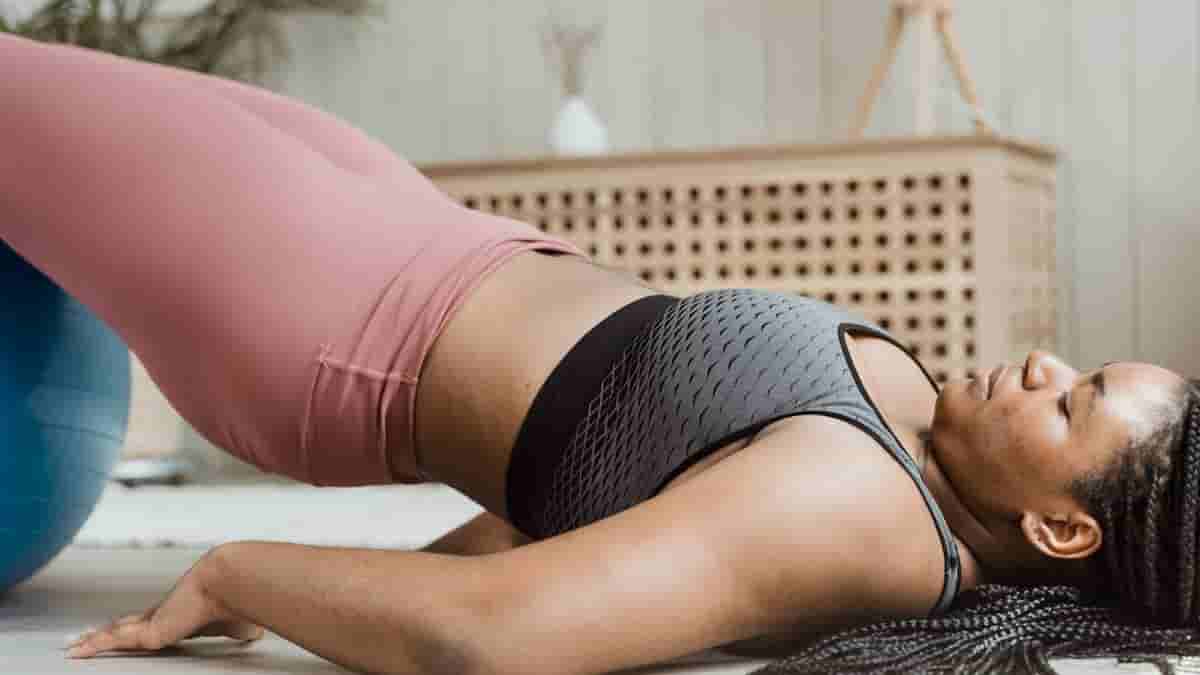
Here is your complete guide to build a booty supplement
Introduction to Build a Booty Supplement
How to build a booty supplement? Building a shapely, toned booty is a goal for many people, and supplements can be a helpful addition to a well-rounded fitness routine. To build a booty supplement you need to learn how to take it effectively. In this comprehensive guide, we’ll explore the best way to build a booty supplement, as well as other important factors to consider. So what is the best tips to build a booty supplement?
Understanding Glute Anatomy and Function
The gluteal muscles, commonly referred to as the “glutes,” are a group of three muscles that make up the buttocks: the gluteus maximus, gluteus medius, and gluteus minimus. These muscles play a crucial role in hip extension, abduction, and rotation, making them essential for activities like walking, running, and climbing stairs. Strengthening the glutes can not only improve the appearance of the booty but also enhance overall lower body strength and stability.
Top Supplements for Building a Booty
Protein Supplements
Protein is essential for muscle growth and repair, making it a crucial supplement for building a booty. Whey protein, casein protein, and plant-based proteins like pea or soy protein can all be effective options. Here’s a comparison of these protein sources:
| Protein Source | Absorption Rate | Amino Acid Profile | Lactose Content |
|---|---|---|---|
| Whey Protein | Fast | Complete | Low |
| Casein Protein | Slow | Complete | Moderate |
| Pea Protein | Moderate | Incomplete | None |
| Soy Protein | Moderate | Complete | None |
Creatine
Creatine is a popular supplement that can help increase muscle mass and strength, including in the glute muscles. It works by increasing the body’s stores of phosphocreatine, which provides energy for muscle contractions. Here are some key benefits of creatine for building a booty:
- Enhances muscle growth and strength
- Improves high-intensity exercise performance
- Increases lean muscle mass
- Supports muscle recovery
Beta-Alanine
Beta-alanine is an amino acid that can help improve muscular endurance, allowing you to train your glutes harder and longer. This can lead to increased muscle growth and a more toned, shapely booty. Here’s how beta-alanine works:
- Increases carnosine levels in muscle tissue
- Buffers lactic acid buildup during exercise
- Delays the onset of muscle fatigue
- Enhances training volume and intensity
Glutamine
Glutamine is an amino acid that plays a role in muscle recovery and immune function. It can help support muscle growth and repair, which can benefit booty-building efforts. Here are some key points about glutamine:
- Helps maintain a positive nitrogen balance
- Supports immune system function
- Aids in muscle recovery and repair
- May help prevent muscle wasting
Caffeine
Caffeine is a stimulant that can provide a boost of energy and focus during your workouts, potentially allowing you to push harder and get more out of your glute-targeting exercises. Here’s how caffeine can benefit booty building:
- Enhances energy levels and mental focus
- Improves exercise performance and endurance
- May increase fat burning during exercise
- Supports muscle recovery
Lifestyle Factors for Booty Building
Resistance Training
Incorporating targeted glute exercises into your workout routine is essential for building a stronger, more toned booty. Exercises like squats, lunges, hip thrusts, and glute bridges are particularly effective. Here’s a table of some of the best glute exercises:
| Exercise | Primary Muscles Worked | Secondary Muscles Worked |
|---|---|---|
| Squats | Glutes, Quadriceps | Hamstrings, Core |
| Lunges | Glutes, Quadriceps | Hamstrings, Core |
| Hip Thrusts | Glutes | Hamstrings, Core |
| Glute Bridges | Glutes | Hamstrings, Core |
| Step-ups | Glutes, Quadriceps | Hamstrings, Core |
Nutrition
A balanced, nutrient-dense diet that includes plenty of protein, carbohydrates, and healthy fats is crucial for supporting muscle growth and recovery. Ensuring adequate calorie intake is also important for those looking to build muscle. Here are some key nutrition tips for building a booty:
- Consume 1.6-2.2 grams of protein per kilogram of body weight per day
- Include complex carbohydrates like whole grains, fruits, and vegetables
- Choose healthy fats like avocado, nuts, seeds, and olive oil
- Stay hydrated by drinking plenty of water throughout the day
- Consider tracking your macronutrient and calorie intake using a fitness app or journal
Rest and Recovery
Allowing your muscles to rest and recover between workouts is just as important as the training itself. Aim for 7-9 hours of sleep per night and consider incorporating active recovery activities like light cardio or stretching on your rest days. Here are some tips for optimizing your rest and recovery:
- Aim for at least 7-9 hours of sleep per night
- Engage in active recovery activities like light cardio or stretching on rest days
- Consider using foam rollers or massage guns to aid in muscle recovery
- Stay hydrated and consume a balanced diet rich in nutrients
- Listen to your body and adjust your training and recovery as needed
Weekly Program for Building a Booty with Supplements
Monday: Glute Activation and Strength
- Perform glute activation exercises like clamshells, fire hydrants, and glute bridges to warm up your glutes
- Focus on compound exercises like squats, lunges, and hip thrusts to build strength
- Incorporate resistance training with weights or resistance bands
- Take your protein supplement after your workout to support muscle recovery and growth
Tuesday: Active Recovery
- Engage in low-impact cardio like walking, cycling, or swimming to promote blood flow and recovery
- Perform light stretching or foam rolling to release muscle tension and improve mobility
- Stay hydrated and consume a nutrient-dense diet to support overall health and recovery
Wednesday: Glute Hypertrophy
- Perform isolation exercises like donkey kicks, hip abductions, and glute kickbacks to target the glutes
- Use higher reps (12-15) and moderate weights to stimulate muscle growth
- Consider taking a creatine supplement to enhance muscle growth and strength
- Ensure adequate rest and recovery between sets and workouts
Thursday: Cardio and Core
- Perform 30-60 minutes of moderate-intensity cardio like jogging, elliptical, or stair climbing
- Focus on core exercises like planks, Russian twists, and leg raises to support overall stability and strength
- Stay hydrated and consume a balanced diet rich in complex carbohydrates and healthy fats
Friday: Glute Endurance
- Perform high-rep (15-20) glute exercises like curtsy lunges, sumo squats, and glute bridges
- Use lighter weights or resistance bands to focus on muscular endurance
- Consider taking a beta-alanine supplement to enhance endurance and delay the onset of muscle fatigue
- Allow for adequate rest and recovery between sets and workouts
Saturday: Rest and Recovery
- Take a complete rest day to allow your muscles to recover and repair
- Engage in light stretching or mobility work to maintain flexibility and range of motion
- Ensure adequate sleep (7-9 hours) to support overall recovery and health
- Stay hydrated and consume a nutrient-dense diet to support recovery
Sunday: Active Rest
- Engage in light physical activity like walking, hiking, or yoga to promote blood flow and recovery
- Focus on mobility and flexibility exercises to maintain range of motion
- Ensure adequate rest and recovery to prepare for the upcoming week
Remember to adjust this program based on your individual fitness level, goals, and recovery needs. It’s also important to consult with a healthcare professional before starting any new supplement regimen.
Best Tips for Building a Booty with Supplements
Incorporate Targeted Exercises
- Focus on compound exercises like squats, lunges, and hip thrusts to target the glutes
- Perform isolation exercises like donkey kicks, hip abductions, and glute kickbacks to further isolate the glutes
- Use proper form and gradually increase weight or resistance to continue challenging the muscles
Optimize Your Nutrition
- Consume enough protein to support muscle growth and repair, aiming for 1.6-2.2 grams per kilogram of body weight per day
- Include complex carbohydrates like whole grains, fruits, and vegetables for energy and recovery
- Choose healthy fats like avocado, nuts, seeds, and olive oil to support hormone production and muscle growth
- Stay hydrated by drinking plenty of water throughout the day
Supplement Strategically
- Whey protein, casein protein, and plant-based proteins like pea or soy protein can help meet your protein needs
- Creatine can enhance muscle growth, strength, and endurance
- Beta-alanine may improve muscular endurance and delay the onset of muscle fatigue
- Glutamine can support muscle recovery and immune function
Allow for Adequate Rest and Recovery
- Aim for 7-9 hours of sleep per night to support muscle growth and repair
- Engage in active recovery activities like light cardio or stretching on rest days
- Consider using foam rollers or massage guns to aid in muscle recovery
- Listen to your body and adjust your training and recovery as needed
Be Patient and Consistent
- Building a booty takes time, consistency, and a holistic approach
- Stick to your exercise and nutrition plan, making adjustments as needed
- Remember that results may vary depending on your individual genetics, training history, and recovery ability
- Celebrate small victories and stay motivated by focusing on your progress and how you feel
By incorporating these tips and working with a healthcare professional to develop a personalized plan, you can maximize your chances of building a shapely, toned booty with the help of supplements.
Frequently Asked Questions
What is the best supplement for building a booty?
The best supplements for building a booty include protein, creatine, beta-alanine, glutamine, and caffeine. These supplements can help support muscle growth, endurance, and recovery, which are all important for developing a stronger, more toned backside.
Read Also: Front Squat Workout Program.
How long does it take to see results from booty-building supplements?
The time it takes to see results from booty-building supplements can vary depending on factors like your starting point, training regimen, and overall diet and lifestyle. Many people report seeing noticeable improvements in the shape and size of their booty within 4-8 weeks of consistent supplementation and training.
Read Also: Row and Kettlebell Workout.
Can I take multiple supplements for building a booty?
Yes, it’s generally safe and effective to take a combination of supplements for building a booty, as long as you follow the recommended dosages and consult with a healthcare professional. Stacking supplements like protein, creatine, and beta-alanine can provide a synergistic effect and help maximize your results.
Read Also: Body Beast Build Legs.
Do I need to follow a specific workout routine to see results from booty-building supplements?
While supplements can provide a helpful boost, they are most effective when combined with a well-designed resistance training program that targets the glutes. Exercises like squats, lunges, hip thrusts, and glute bridges should be the foundation of your booty-building routine.
ReadAlso: Front Squat Machine.
Are there any side effects to taking booty-building supplements?
Most of the supplements mentioned in this guide, such as protein, creatine, beta-alanine, and glutamine, are generally well-tolerated when taken at recommended doses. However, it’s important to consult with a healthcare professional before starting any new supplement regimen, especially if you have any pre-existing medical conditions or are taking medications.
Read Also: The Surprising Health Benefit of Celery Tea.
Conclusion
Building a shapely, toned booty with the help of supplements can be a rewarding and achievable goal. By understanding the anatomy and function of the glute muscles, incorporating the right supplements into your routine, and focusing on a well-rounded lifestyle approach, you can work towards your desired booty goals. Remember to always consult with a healthcare professional before starting any new supplement regimen, and be patient and consistent with your efforts. With the right plan in place, you can unlock the power of your glutes and achieve the booty of your dreams.
Read Also: Neck Pad for Squatting.
-

 Nutrition1 year ago
Nutrition1 year agoDates Eating Benefits: Here Is Your Complete Guide
-

 Fitness1 year ago
Fitness1 year agoAbs Workout for Beginner: Your Ultimate Guide!
-

 Exercise1 year ago
Exercise1 year agoBest Exercises For Bicep: Your Complete Guide
-

 Fitness1 year ago
Fitness1 year agoHow Many Calories in a Potato? Nutrition Facts
-

 Exercise1 year ago
Exercise1 year agoWarmup for Back Workout: Your Complete Guide
-

 fitness diet1 year ago
fitness diet1 year agoFast Food That’s Gluten Free: Your Complete Guide
-

 Nutrition1 year ago
Nutrition1 year agoNutrition Facts Of Strawberries: Your Ultimate Guide
-

 fitness diet1 year ago
fitness diet1 year agoEffects of Sugar in the Body? Your Complete Guide





